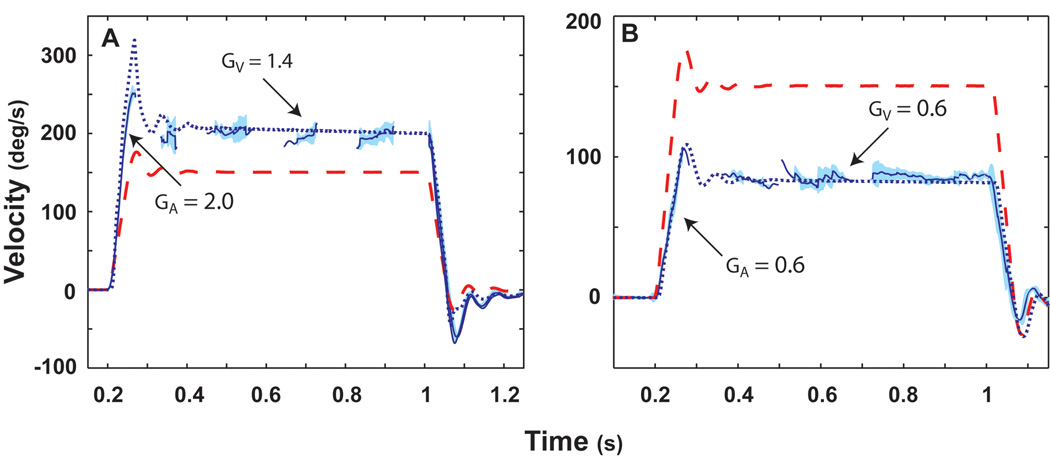Figure 7.
Averaged responses to 3,000°/s2 accelerations to a peak velocity of 150°/s following adaptation to ×2.2 spectacles (A), and following adaptation to ×0.45 spectacles (B). Fast phases were removed prior to averaging the responses. Head velocity is indicated by the dashed red line and eye velocity by the solid blue line. One standard deviation is indicated by the light blue shading around this line. The dotted blue line is the simulated eye response calculated from our bilateral model. Changes in gain due to magnifying spectacles were simulated by increasing the gain of GP by x2.5 and GT by x1.7. In addition, a first-order band-pass filter, represented by a single pole (0.02 s) and a single zero (0.01 s) were added to the tonic pathway. Changes in gain due to minimizing spectacles were simulated by decreasing the gain of GP by × 0 and GT by × 0.6. In addition, a first-order band-pass filter, represented by a single pole (0.02 s) and a single zero (0.03 s) were added to the tonic pathway. This high-pass filter accounts for the observation that low-frequency responses adapt better than high-frequency responses in the tonic pathway. This figure was adapted with permission from [6].

